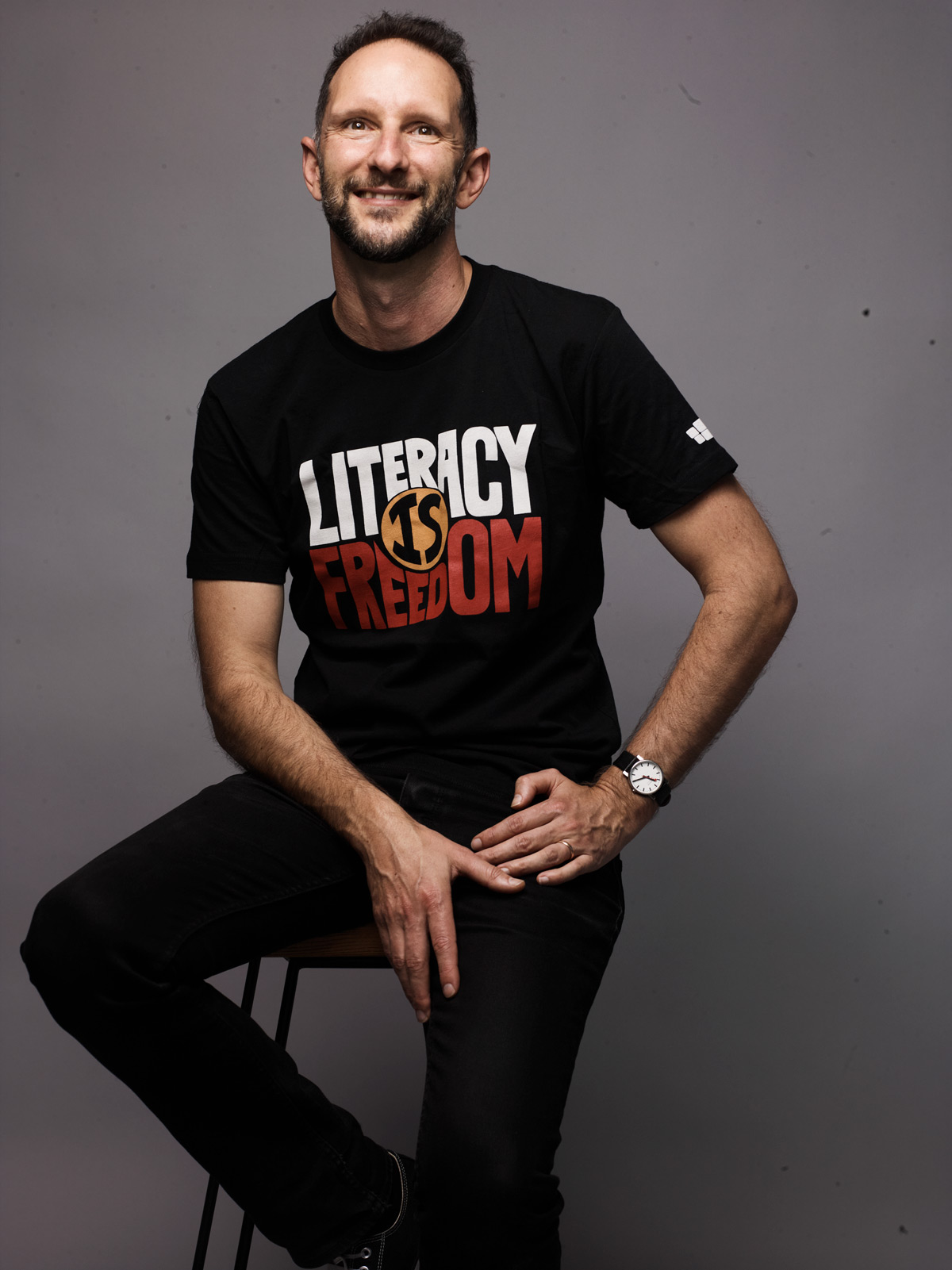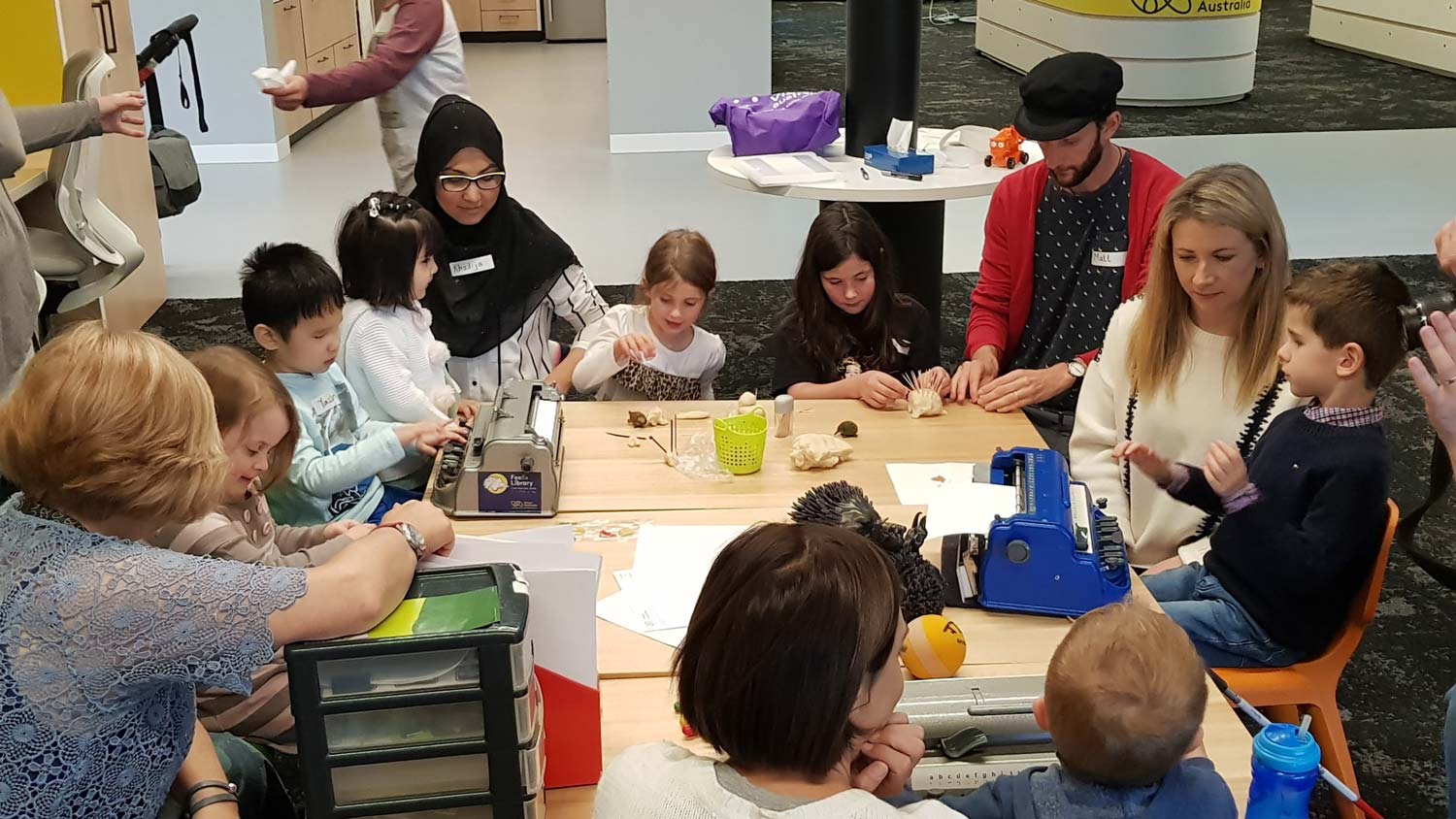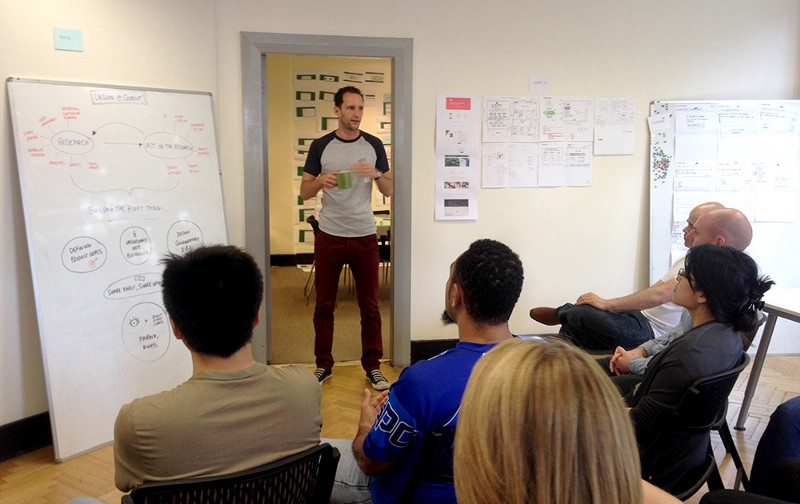I use over 20 years of design, technology and product experience to enable socially aware early-stage startups and fast-growing scale-ups to minimise waste, grow, and make a positive difference.
I’ve worked at all levels of the private and public sector and help the businesses I believe in use digital technology to improve the way we live and the impact on our planet – right now, this means focussing on Health, Climate Adaptation, Digital and Human Rights, and Education. I’m an advocate for lean design, hypothesis-led product development, evidence-based decision making and enabling founders and businesses to do it themselves. I am guided by my values in all the work I do.
Alongside my extensive and deep digital experience, I’m also a best-selling and internationally published author and illustrator running a successful and growing social enterprise in children’s publishing. For this work, I’m a two-time recipient of the May Gibbs’ Children’s Literature Trust Fellowship and currently an Australian Literacy and Numeracy Foundation Ambassador.
I love meeting new people so if you’d like a coffee or just a chat, feel free to contact me. I may not respond immediately (like, within less than 24 hours), but I will respond.

To be honest, I’m privileged. It began with luck, and I added some hard work, but right from the start, I was ahead. I wrote some in-depth thoughts on this a little while ago so I won’t go into it again. But if you’re after something shorter, read on.

I feel obliged to use the privilege I have to even out the score – to help those who drew the short straw to get another one. In 2016, I did an exercise to write my own obituary in as few characters as I could (morbid, yes, but useful). I landed at, “By the end, he gave more than he took.” With this as my north star, I’m out to have a net-positive effect on the systems I interact with.
I believe in equality, justice, and sustainability. Not just for humans (which human-centred design is so good at doing), but for all living things. I value honesty, generosity, compassion, vulnerability, and the wisdom of others. I use those values on a day-to-day basis to interact with others and make decisions I can be proud of.
I like to work with nice* people who are out to make a positive change in the world. I use to think I could do this on my own but it turns out that the positive change is amplified when a group of humans from different backgrounds are working together.
If you’re a nice person, let’s have a virtual chat, whether you’ve got a problem to solve or not.
My values help me make decisions, especially when those decisions are difficult ones. I've never regretted a decision I've made when I've stuck to these values, and, the odd time where I thought it was OK to break the rule, the outcome has never been as good.
I also use my values to assess the importance of the relationships I form with others. My most intimate, long-lasting and trusted relationships are with those who share these values.
Prioritise others needs above my own, within safe limits of my wellbeing.
Be upfront and sincere about what I say, do, and promise while acknowledging the power of honesty to hurt, harm, and upset.
There will always be more than I am capable of knowing. A lot of people have learned a lot of things before me.
I ask why. A lot. Why of others but also, and more importantly, why of myself.
It’s OK to not know, or to be scared sometimes. In fact, if that doesn't happen, something's wrong.
I don't know if every designer begins their career with these. In my experience, I’ve had to live a life long enough to get to know myself and my values better, as well as succeed and fail in certain places before I’ve been able to articulate the principles by which I measure my success as a designer. While every project, customer, and client is different, here is a succinct-as-possible summary of what drives my approach to designing things (in no particular order).
Everything we make exists in an ecosystem constructed of social, political, environmental, economic, technological, and legal norms, expectations and cultures. So, everything I make measures up against those without getting stuck to make sure that a balance is struck with every choice to maximise positive change and minimise harm.
The things I make do not deceive (which is why I don’t work in marketing or advertising – yes, it’s not all bad). The things I make aim to communicate clearly and succinctly. I spend a lot of time pracitising copywriting for this purpose. Not many designers do.
Making things takes energy & I believe we should conserve as much as energy as possible. So, the things I make are made to last. In software, that’s a challenge, but it’s also a mark of good design so it’s something I specifically aim for.
Words aren’t good at explaining well-made. You could argue it’s a combination of durable, reliable, and honest. Some label it as ‘craft’. But humans know well-made when we see it, feel it, and interact with. You, dear reader, probably know it too. I aim for giving people that feeling.
Pleasure can be derived from the form of the thing, or the function of thing. In rare cases, it’s both. Provoking pleasure in someone through the use of an object or tool has economic benefits, but it’s also a gift to another – enjoy it.
Not all designers work the same way, nor can they, depending on the context in which they're operating. However, over the 20 years or so of working in design, here are practices I find I have the most success with, regardless of context.
Humans are story-driven creatures. Facts and figures are easier to remember when they're packaged in a story – a person, a conflict, a resolution. As a professional storyteller and illustrator, I use fit-for-purpose modes of communicating to make sure that what I communicate is memorable, meaningful and motivating. That may be a recorded video of a user, some audio of being out in the field, a diagram or drawing of a workflow. A well-crafted story (of research, of reasons for design decisions, of why something in the world is the way it is) makes it easier to communicate with developers, stakeholders, investors, boards and every space a human occupies.
Almost nothing communicates 'this is a draft idea' than seeing it hand-drawn. As soon as something becomes digital, it evokes a 'recommendation'. I always begin with pen and paper to make sure I understand the problem, avoid refining ideas too early, and most importantly, invite collaboration as effortlessly as possible.
I can't remember where I came read it but it goes like this, "People don't know what they want until they see what they've asked for". If I've been working for more than a day without seeking some input from someone, that's a problem. Whilst deep-thinking and alone-time is important for effective and efficient problem consideration, there's nothing quite like getting outside input as early as possible.
I'm a minimalist at heart so my instinct is to reduce. Whilst I come with a broad and deep toolkit of design methods, I don't apply them in some sort of dogmatic sequence. I draw on what's needed to ensure the goal is met, nothing fancy or nothing more.
No matter how much one might try to sequence design intervention (i.e research precedes design, visual design precedes building anything in code etc), nothing compares to building something lightweight and iterating in the field. Only then does one understand the true experience, uncover new needs or shifting priorities. So, I optimise for shipping software that is designed for learning and adaptation. In my experience, it's the most beneficial approach, for users and organisations.
